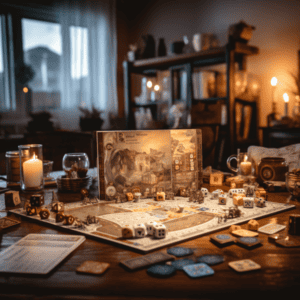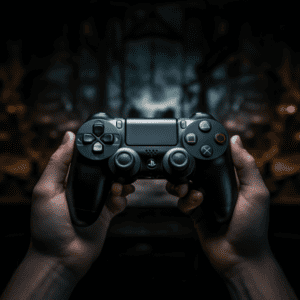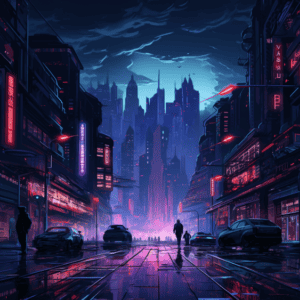If you’re a gamer, you’ve probably enjoyed sinking hours into the iconic Final Fantasy series over the years.
But here’s a debate – is Final Fantasy a JRPG or RPG? As a longtime gaming nerd myself, let’s settle this question!
First, what defines a JRPG? The key elements are anime-style art, turn-based combat, expansive storylines, and certain themes like fantasy. JRPGs originated in Japan, hence the name, but now come from all over.
Standard RPGs encompass a broader range – think Skyrim, The Witcher, etc. These role-playing games focus more on open world freedom, real-time combat, and player choice shaping the story.
So where does Final Fantasy fall? Well, when the first game released in 1987 for Nintendo, it basically established and popularized the JRPG formula as we know it today. The series has evolved across 15 mainline titles, but retains those core JRPG traits.
While each Final Fantasy game has its own look and spin, they contain key aspects like turn-based combat, recurring elements, anime stylings, and epic fantasy narratives. So Final Fantasy is considered a quintessential and landmark JRPG franchise. It helped define the genre!
Let’s explore more details on how Final Fantasy exemplifies Japanese RPG distinctions and innovations. Dive in fellow gamers!
KEY TAKEAWAY
Is Final Fantasy A JRPG or RPG?
The classification of Final Fantasy as a JRPG or RPG is a subject of debate among gamers (1). While it has elements of both genres, ultimately, it can be considered a hybrid that blends traditional RPG mechanics with distinct Japanese storytelling and aesthetics. The game’s unique features and gameplay mechanics make it a standout title that defies easy categorization.
Defining JRPGs and RPGs: Understanding the Genre Classification
When examining the question of whether Final Fantasy is considered a Japanese RPG (JRPG) or standard RPG, it’s helpful to first define what distinguishes these genre classifications.
JRPGs emerged in the 1980s with games like Dragon Quest and Final Fantasy on Japanese computers and consoles. The term refers to RPGs designed and produced in Japan, but can also describe games made elsewhere that adhere to conventions popularized by early Japanese titles.
Common elements of JRPGs include anime/manga stylistic presentation, turn-based combat, intricate storytelling focused on pre-defined characters, leveling/growth systems, exploration of an overworld, and random enemy encounters.
Western RPGs meanwhile arose from tabletop games like Dungeons & Dragons and emphasize player freedom, open worlds, moral choices shaping customizable PCs, side quests, skill checks, and real-time action-focused combat.
So while some mechanics overlap, JRPGs traditionally focus more on turn-based systems and linear stories with defined characters, compared to Western RPGs’ open worlds, choices, and custom heroics.
The terms can be blurry, but in Japan “JRPG” denotes a distinct style.
Final Fantasy: Examining its Gameplay and Design Elements

When looking at the Final Fantasy franchise (2), recurring elements in its gameplay and design mark it strongly as following JRPG distinctions established by its early games.
The series features turn-based combat, with variations such as Active Time Battle. Players issue commands from menus rather than having direct action control. Stories focus on pre-determined characters within an overarching linear narrative.
Leveling up via experience points and consumable items/gear are mainstays. The games have predefined playable characters rather than character customization. Fantasy settings dominate, especially medieval and magic themes.
Recurring motifs include airships, Chocobos, Moogles, character names like Cid, and summon creatures. While later games evolved, core mechanics adhere to JRPG foundations set by early titles like FF1-6.
So from narrative focus to turn-based systems, level progression, and stylistic elements, Final Fantasy embodies quintessential JRPG distinctions popularized by franchises like Dragon Quest and evolved conventions within the genre.
The Historical Perception of JRPGs in Western Media

The classification of Final Fantasy and other Japanese RPG franchises has not always been viewed the same in Western markets compared to Japan. Looking at the history provides context for debates about categorization.
In the 1990s, Japanese console RPGs had very limited releases in North America and Europe. Many games in beloved franchises like Final Fantasy and Dragon Quest were not localized due to perceived lack of mainstream appeal. The genre was considered niche outside Japan.
When JRPGs did receive Western ports and attention, they were often branded with a stigma of being overly complex, convoluted and text-heavy compared to Western role-playing games. JRPGs were stereotyped as akward and confusing.
However, the global mainstream breakthrough success of Final Fantasy VII in 1997 helped shatter misconceptions about JRPGs. Its cinematic presentation showed the genre’s storytelling appeal. The PlayStation era saw the genre gain worldwide popularity.
While the term “JRPG” was used dismissively by some Western critics in the past, Final Fantasy’s impact helped establish appreciation for mechanics previously mistaken as inaccessible. The perception evolved to recognize distinctions.
Remarks by FFXVI Producer Naoki Yoshida on the JRPG Label
In discussions around Final Fantasy XVI, producer Naoki Yoshida has acknowledged debate about whether it fits the JRPG label but believes the franchise pioneered the genre’s conventions.
Yoshida asserts that RPG was once considered a Western concept, and credits Final Fantasy with becoming a core example of the JRPG style. He reiterates that the series established characteristic elements that diverged from Western RPGs.
So according to key Final Fantasy developers like Yoshida, while the lines have blurred over time, the series’ lineage can be traced directly back to creating many tropes that came to define JRPGs and set them apart from Western RPG traditions.
Final Fantasy played a key role in carving out the distinction.
More on which game has the best JRPG art style.
The Impact of Classic JRPGs like Final Fantasy on the Genre
While the nuances of RPG sub-genre classification continue to be debated, there is no denying the enormous influence of early JRPG titles like Dragon Quest and the first Final Fantasy games in laying foundations for the genre.
Dragon Quest established core mechanics like world exploration, random encounters, grinding, and storytelling that future JRPGs would build upon. Final Fantasy expanded on these conventions while pioneering ATB battles, melodic scores, character archetypes, and evolving each installment.
These series helped define the stylistic template for JRPGs – from turn-based systems, linear storytelling, defined protagonists, fantasy aesthetics, and emphasis on growth and progression.
Both franchises also proved the mainstream commercial viability of JRPGs, especially once Final Fantasy VII achieved global success. Their approach resonated worldwide.
So for both deviating from Western RPG norms and popularizing mechanics that distinguished the form in Japan, pioneering JRPGs like Final Fantasy are responsible for setting the genre’s course going forward.
Their impact still echoes through the gaming landscape today.
More on what are the characteristics of JRPG art style.
Conclusion
After this epic quest, the verdict is clear – Final Fantasy is classified solidly among legendary Japanese RPG series. Its conventions like turn-based battles, overworld maps, anime cosmetics, and grand storytelling have made Final Fantasy synonymous with JRPGs.
But the franchise also innovated the genre in huge ways generation after generation. It struck the perfect balance between maintaining signature JRPG elements while constantly evolving.
So while debated, Final Fantasy undoubtedly belongs in the JRPG family tree. It helped pioneer tropes that defined the genre. But with each new title, Final Fantasy also pushed boundaries to new horizons. Here’s to many more installments continuing its legacy!
Let me know your thoughts on Final Fantasy and JRPGs in the comments! Which FF is your favorite? And what defines a great JRPG for you? I could talk gaming all day, so hit me up. Until then my fellow fans, keep on leveling up! The epic adventure continues…
More on the beauty of JRPG art.
References
- https://www.ign.com/articles/how-final-fantasy-xvi-redefines-the-series-again-and-dont-call-it-a-jrpg#:~:text=Final%20Fantasy%20XVI%20is%20a,%22JRPG%22%20is%20a%20vibe.
- https://en.wikipedia.org/wiki/Final_Fantasy






